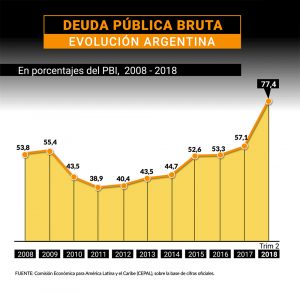
The work of a cashier is usually of 8: 00hs. The task consists of scanning products and billing them, with long periods, repetitive movements, over effort, stress, over exigency etc. This is harmful to the health of the worker, and in other cases, they could trigger a «Professional Illness» which may be:
-Tendonitis.
– Fatigue in the legs and feet.
– Lumbar pain.
– Cervical problems.
-The carpal tunnel syndrome.
We are going to talk about the first one.
TENDONITIS
Tendonitis is the inflammation of a tendon, the fibrous structure that joins the muscle with the bone. It is usually produced by overuse of the tendons. It often becomes a chronic pathology that has a high rate of recidivism and that causes pain and increased sensitivity around the joints.
Causes
It arises as a result of muscle overload or injury. However, it can also occur due to the development of another pathology or age, because with aging, the tendons lose elasticity and degeneration can occur.
Tendonitis can occur in any tendon of the body. Among the most common areas are the shoulders, heels, elbows and wrists.
They usually occur in young adults as a result of repetitive exertion (often performed in bad posture) or by overload in some areas of the body
One can distinguish between sports tendonitis and degenerative tendonitis. «The latter occur mainly in the supraspinatus tendon (in the shoulder) and the medius gluteus (hip), and may be related to age and autoimmune rheumatic disease.»
Diabetes type 1 and 2 and rheumatoid arthritis are among the main pathologies that can cause this condition.
symptom
The main manifestations of this pathology are:
- Pain and sensitivity in the mobilization of the tendon. These symptoms become worse in the areas near the joints.
- Intensification and increase of discomfort and pain with movement or the performance of some activity.
- Pain during the night.
In the initial phases, tendonitis only bothers after physical activity.
Prevention
- In sports activities it is essential to perform a good warm-up before starting.
- Avoid repetitive movements that can overload the upper and lower trunk. In the case of performing a sports practice based on repetitions the person should alternate these series with periods of rest and recovery.
Types
- Lateral epicondylitis (popularly known as tennis elbow): disease caused by continuous tension on the muscles and extensor tendons of the forearm. It has the origin in the elbow.
- Medial epicondylitis (golf elbow or direct tennis elbow): a condition in which the forced flexion of the wrist can damage the tendons that are inserted in the elbow.
- Rotator cuff tendinitis: pathology characterized by inflammation of the capsule of the shoulder and related tendons.
- DeQuervain tenosynovitis: is the most common type of tenosynovitis, which consists of inflammation of the tendon sheath of the thumb tendons.
- Finger in spring or thumb in spring: tenosynovitis in which the tendon sheath becomes inflamed and thickened, thus preventing the person can extend or flex without difficulty the affected finger or thumb. The finger or thumb can block or suddenly trigger.
- Achilles tendonitis: inflammation of the Achilles tendon, which connects the muscles of the calf with the heel. It can be caused both by the loss of flexibility of the tendon due to age and overload when practising in excess sports such as running or doing it with an incorrect technique, with inadequate footwear or with overweight.
- Patellar Tendinitis: inflammatory process of the patellar tendon and the surrounding sheath that produces pain, inflammation and functional impotence. It is related to physical activity.
Diagnosis
The diagnosis is made by a physical examination in which the affected area is located guided by pain, swelling and heat in the skin covering the sensitive area. No radiological tests are necessary, which are only done to rule out other pathologies.
Treatments
The treatment of tendonitis aims to reduce and relieve pain and inflammation in the affected area. To achieve this, the main recommendation offered by specialists is rest to relax the affected tendon and help it to recover. If the tendonitis is severe, sometimes the doctor can immobilize the area to ensure that rest is done. In many occasions specialists recommend combining rest with pharmacological treatment, mainly with non-steroidal anti-inflammatory drugs, also known as NSAIDs. The most commonly used are acetylsalicylic acid and ibuprofen. These drugs can help reduce inflammation in the area. In the most serious cases, specialists administer corticosteroid injections.
Physical therapy is also recommended to strengthen the area, ensure that the tendon recovers and prevent future injuries.
Along with manual physiotherapy, the use of microwaves, ultrasound or shock waves may be useful, depending on the type of injury and who it affects.
When rest, medication and physiotherapy do not work, it may be necessary to go on to invasive therapies, among which are the ultrasound-guided electrolysis (which generates a repairing process through the application of an electric current inside the tendon) and infiltration into the platelet-rich plasma tendon.
Surgery is not usually applied in this type of pathology, although it is sometimes necessary to remove inflamed or calcified tissue that compresses the tendon.








